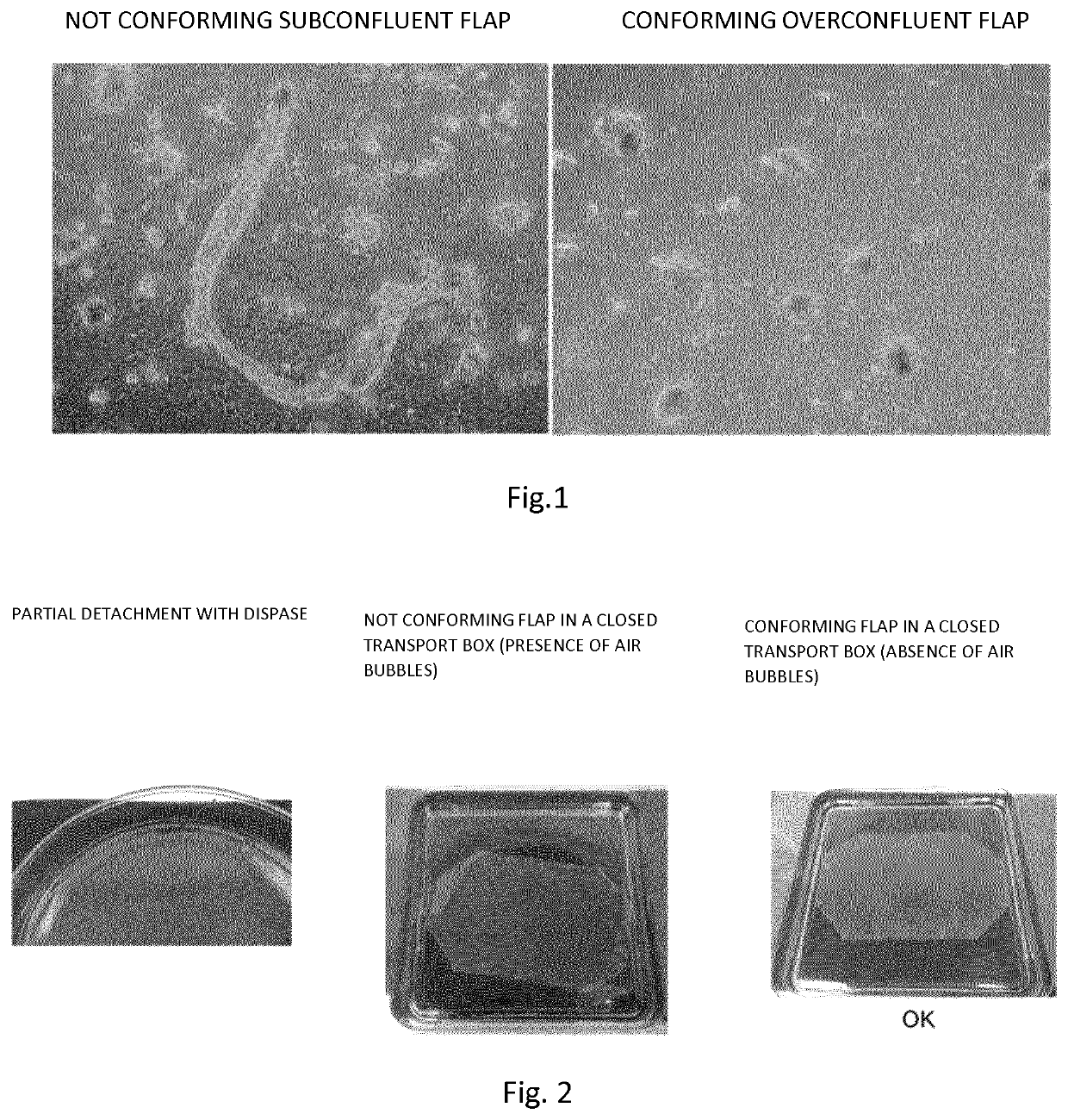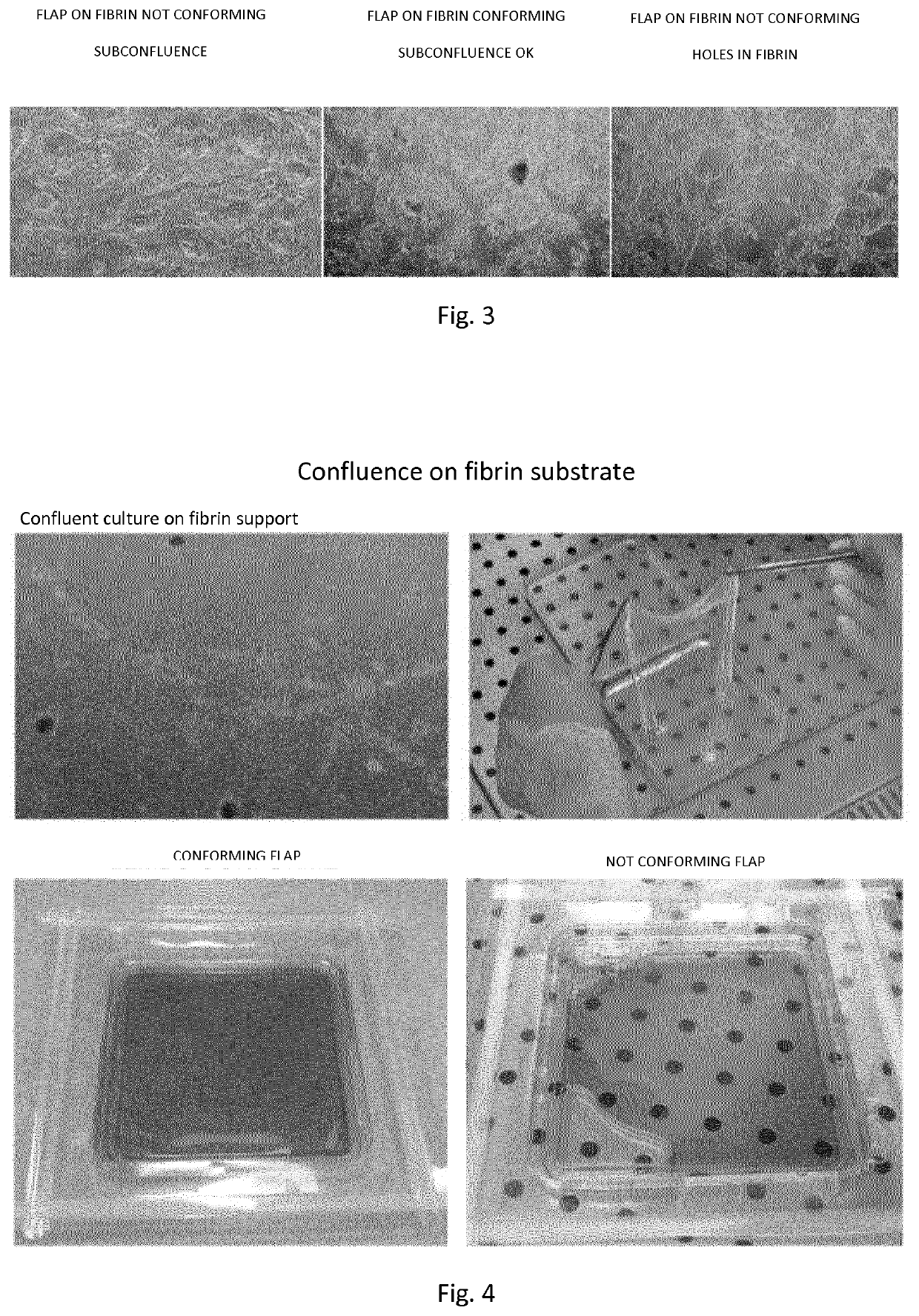Method for producing cell flaps
a cell flap and cell technology, applied in the field of cell flap production, can solve the problems of inadequate flap release, achieve superior product performance and biological stability, reduce the risk of microbiological contamination, and reduce the risk of transport breakage
- Summary
- Abstract
- Description
- Claims
- Application Information
AI Technical Summary
Benefits of technology
Problems solved by technology
Method used
Image
Examples
examples
[0122]Materials and Methods
[0123]Isolation of Epidermal Keratinocytes from Biopsy of Human Skin
[0124]Primary human keratinocytes are isolated from 2-9 cm2 skin biopsies after submission and adhesion to informed consent. The biopsy is subjected to enzymatic digestion in Trypsin-EDTA solution at 37° C. To obtain maximum yield and minimize the risk of toxicity from exposure to trypsin-EDTA or prolonged suspension time of keratinocytes during extraction, till 6 sequential trypsinizations of 30′ each are performed. After each trypsinization the cellular material is recovered and the trypsinizations 1-3 and 4-6 are combined and plated in plastic supports according to the cell yield at a density of 1.33×104 cells / cm2 on a feeder layer of lethal irradiated murine cells 3T3-J2 (Rheinwald, J. et al. 1975). The medium used consists of a mixture of Dulbecco's modified Eagle (DMEM) and Ham F12 (2:1) supplemented with 10% fetal bovine serum, 0.5% penicillin-streptomycin, 2% glutamine, insulin (5 ...
PUM
| Property | Measurement | Unit |
|---|---|---|
| thick | aaaaa | aaaaa |
| temperature | aaaaa | aaaaa |
| time | aaaaa | aaaaa |
Abstract
Description
Claims
Application Information
 Login to View More
Login to View More - R&D
- Intellectual Property
- Life Sciences
- Materials
- Tech Scout
- Unparalleled Data Quality
- Higher Quality Content
- 60% Fewer Hallucinations
Browse by: Latest US Patents, China's latest patents, Technical Efficacy Thesaurus, Application Domain, Technology Topic, Popular Technical Reports.
© 2025 PatSnap. All rights reserved.Legal|Privacy policy|Modern Slavery Act Transparency Statement|Sitemap|About US| Contact US: help@patsnap.com


